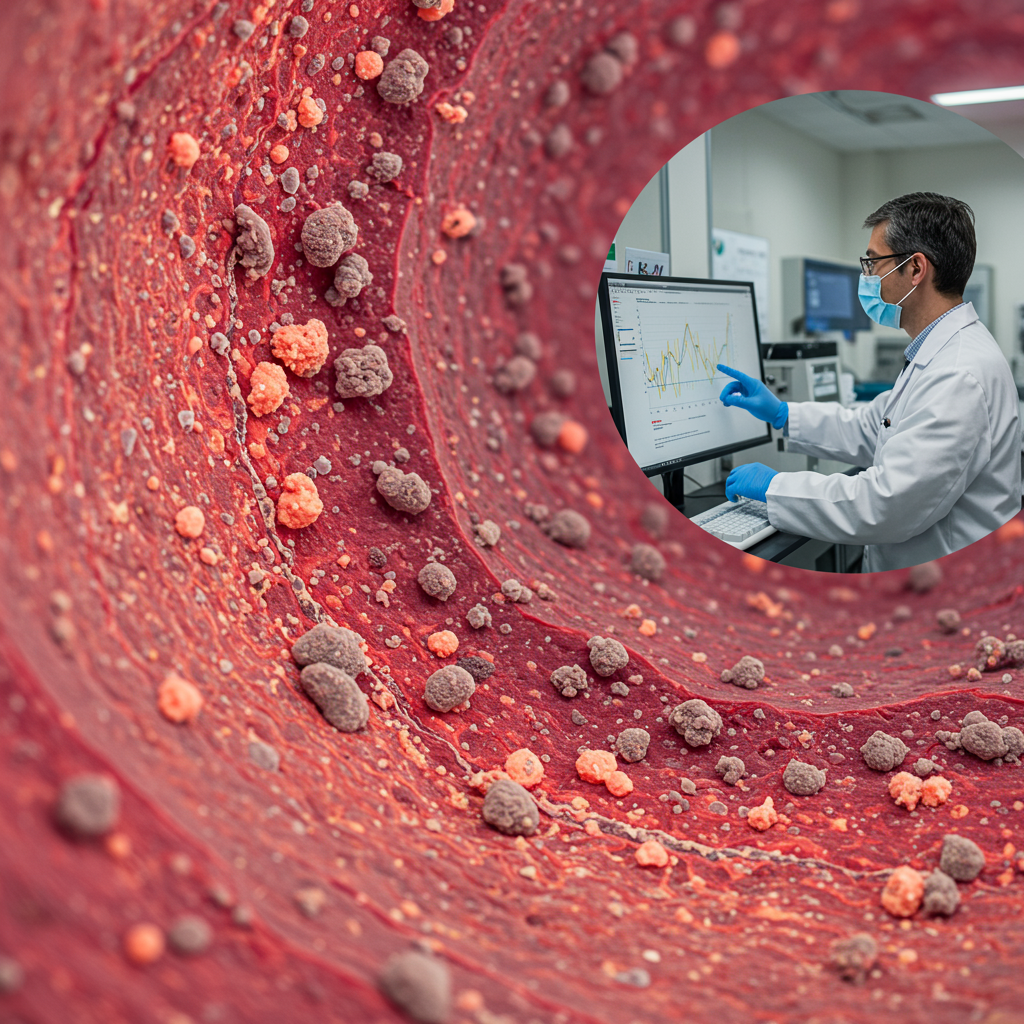Lung cancer is a devastating disease, often strongly associated with smoking. Yet, alarmingly, up to 25% of global lung cancer cases occur in individuals who have never used tobacco. For years, understanding the primary drivers behind lung cancer in this significant population segment has been a major challenge for researchers. Now, a groundbreaking study shines a powerful light on a previously underestimated culprit: fine particulate air pollution.
Scientists from the National Institutes of Health (NIH) and the University of California, San Diego, conducted the largest-ever whole-genome analysis of lung cancer in never-smokers. Their findings, published in the prestigious journal Nature on July 2, 2025, establish a strong link between exposure to polluted air and specific, harmful genetic mutations found in these tumors. This research marks a critical step toward developing better prevention strategies for millions worldwide who face this risk without ever lighting a cigarette.
Unveiling a Hidden Threat: Lung Cancer in Never-Smokers
While epidemiological studies have long suggested a correlation between air pollution and lung cancer risk, this new research takes a significant step forward. Instead of just looking at population-level statistics, the NIH and UCSD scientists peered directly into the genetic code of lung tumors from never-smokers. Their goal was to identify the molecular ‘fingerprints’ left behind by environmental exposures, helping to uncover how lung cancer starts in this group. This genomic approach provides compelling evidence of pollution’s direct impact on cellular DNA.
Addressing the research gap for never-smokers is crucial. Studies of lung cancer genomics have traditionally focused heavily on smokers, leaving a void in our understanding of how the disease develops in the substantial non-smoking population. Defining these causes is essential for improving early detection, developing targeted therapies, and, most importantly, implementing effective prevention measures tailored to never-smokers. The insights gained from this study lay foundational knowledge in this critical area.
Breakthrough Research: The Sherlock-Lung Study
This landmark investigation is part of the larger Sherlock-Lung study. Researchers analyzed lung tumor samples from an impressive cohort of 871 never-smoker patients. These patients were located across 28 diverse geographic locations spanning Africa, Asia, Europe, and North America. Analyzing such a large and geographically varied group allowed the scientists to identify patterns that might be masked in smaller studies.
Using advanced whole-genome sequencing technology, the team meticulously mapped the DNA mutations within each tumor. By correlating these detailed genomic data with estimates of long-term exposure to fine particulate matter (PM2.5) – tiny airborne particles often originating from vehicles and industry – derived from satellite and ground-level measurements, they could draw powerful conclusions about environmental influences on cancer development at a molecular level. The sheer scale and depth of this genomic analysis make this study a unique and highly authoritative contribution to the field.
Air Pollution’s Molecular Fingerprint
The study’s central finding is stark: never-smokers living in areas with higher fine particulate air pollution levels exhibited a significantly greater number of genetic mutations in their lung tumors. This wasn’t just a random increase in mutations; the researchers found specific patterns, known as mutational signatures, associated with pollution exposure.
They observed associations between air pollution exposure and mutations in the TP53 gene, a critical tumor suppressor gene frequently altered in many cancers. Furthermore, high pollution levels were linked to an increase in specific mutational signatures, including SBS4, a signature previously strongly associated with tobacco smoking, and SBS5, often seen as a ‘clock-like’ signature related to aging or endogenous processes. This suggests air pollution doesn’t necessarily create entirely new types of mutations but rather increases the burden of existing, known DNA damage pathways. The study also found a clear dose-response relationship: higher levels of air pollution correlated directly with more mutations and shorter telomeres, sections of DNA at the end of chromosomes that typically shorten with age but were found to be prematurely shorter in individuals with higher pollution exposure.
More Mutagenic Than Secondhand Smoke?
One particularly noteworthy finding from the Sherlock-Lung study involved a comparison between air pollution and secondhand smoke exposure. While previous research has shown links between secondhand smoke and lung cancer, this genomic analysis yielded surprising results.
Never-smoker patients who reported exposure to secondhand smoke showed slightly higher overall mutation burdens and shorter telomeres compared to those with no reported secondhand smoke exposure. However, crucially, this exposure did not lead to an increase in cancer-driving mutations or the specific mutational signatures (like SBS4) strongly linked to air pollution and smoking. The researchers suggest that fine particulate air pollution may possess a higher overall ability to cause cancer-driving genetic changes (mutagenicity) compared to secondhand smoke. It’s important to note the authors acknowledged that reliance on self-reported secondhand smoke exposure data could potentially influence this specific comparison. Nevertheless, the contrast in genomic impact observed between the two environmental factors is a key takeaway from this study.
Beyond Air Pollution: Other Environmental Culprits
While air pollution took center stage, the Sherlock-Lung study also identified other environmental factors contributing to the genomic landscape of lung cancer in never-smokers. Researchers detected a specific mutational signature, SBS22a, which has previously been linked to exposure to aristolochic acid. This plant-based substance is sometimes found in traditional medicines.
Interestingly, this signature was found almost exclusively in lung cancer cases of never-smokers originating from Taiwan. While aristolochic acid is known to cause mutations in other organs like the kidneys, liver, and bladder, this study provides the first genomic evidence suggesting it may also play a role in lung cancer development, potentially through inhalation of herbal remedies. The study’s broad geographic scope was essential in uncovering such regionally specific risk factors.
Geographical Differences Tell a Story
The geographic analysis within the study provided further insights by highlighting regional variations in the prevalence of specific driver mutations. For instance, the study found that KRAS mutations were significantly more common (nearly four times higher prevalence) in adenocarcinomas from never-smokers in North America and Europe compared to those in East Asia. Conversely, EGFR and TP53 mutations were found to be more prevalent in adenocarcinomas from never-smokers in East Asia. These regional differences underscore the diverse array of genetic pathways and environmental exposures that contribute to lung cancer development across different populations.
Furthermore, the researchers discovered a new, previously unexplained mutational signature, SBS40a, present in the majority of never-smoker lung cancers analyzed, but absent in smokers. The cause of this signature remains unknown and did not correlate with air pollution or the other measured environmental factors. This finding underscores that there are likely additional, as-yet-unidentified contributors to lung cancer in this population group, highlighting the complexity of the disease and the need for continued research.
What This Means for Prevention and Public Health
The findings of the Sherlock-Lung study carry significant implications for public health and prevention strategies, particularly for the growing population of never-smokers affected by lung cancer. By identifying fine particulate air pollution as a significant driver of cancer-causing mutations in this group, the research provides crucial evidence supporting the need for stronger air quality regulations and public health initiatives aimed at reducing exposure.
Understanding the specific genomic changes linked to pollution exposure can potentially pave the way for targeted prevention strategies, such as identifying individuals at higher risk based on their genetic profile and environmental exposures. It also adds urgency to the global efforts to combat air pollution, which is already recognized as a major public health threat exacerbated by factors like climate change and wildfires. This study emphasizes that tackling air pollution isn’t just about respiratory health; it’s fundamentally about reducing cancer risk for everyone, including those who have never smoked.
Frequently Asked Questions
How does air pollution specifically cause mutations in lung cancer?
Air pollution, particularly fine particulate matter (PM2.5) from sources like vehicles and industry, contains tiny particles that can be inhaled deep into the lungs. The Sherlock-Lung study found that higher exposure to these particles is strongly associated with increased genomic changes in lung tumors of never-smokers. This includes damage to key genes like TP53 and increases in specific mutational signatures (like SBS4, also linked to smoking). The study observed a dose-response relationship, meaning more pollution led to more mutations and premature telomere shortening, a marker of cellular damage. While the exact biological mechanisms are complex, the research confirms that pollution has a mutagenic effect, directly damaging DNA and driving cancer development.
What was the “Sherlock-Lung study” and who conducted it?
The Sherlock-Lung study is the name given to the large-scale research effort that conducted the biggest whole-genome analysis of lung cancer in individuals who have never smoked. This specific study, which published its findings in Nature on July 2, 2025, was led by scientists at the National Institutes of Health (NIH), specifically the National Cancer Institute (NCI), in collaboration with researchers at the University of California, San Diego. The study involved analyzing tumors from 871 patients across 28 geographic locations globally to understand the genetic changes associated with environmental exposures like air pollution.
Is air pollution a bigger cause of lung cancer mutations than secondhand smoke for never-smokers?
According to this groundbreaking study, the answer appears to be yes, specifically in terms of causing cancer-driving genetic mutations. While never-smokers exposed to secondhand smoke showed a slight increase in overall mutations and shorter telomeres, their tumors lacked the distinct mutational signatures or an increase in key cancer-driving mutations found in tumors linked to air pollution or smoking. The researchers suggest fine particulate air pollution may have a higher mutagenic potential – the ability to cause the specific genetic changes that initiate cancer – than secondhand smoke, based on this large genomic dataset. However, they also noted that accurately measuring past secondhand smoke exposure can be challenging, which might influence this comparison.
Conclusion
The findings from the Sherlock-Lung study fundamentally shift our understanding of lung cancer development in never-smokers. By providing robust genomic evidence, researchers have established fine particulate air pollution as a significant and potentially potent environmental mutagen contributing to the disease in this population. The study highlights that air pollution doesn’t just increase overall risk; it leaves specific, detectable molecular footprints in tumor DNA that are similar to those seen in smokers.
This research underscores the critical need for continued efforts to improve air quality globally, not only for respiratory health but as a vital strategy in cancer prevention. While challenges remain, including identifying the causes of newly discovered mutational signatures, this study offers hope. By uncovering the mechanisms through which environmental exposures drive cancer, scientists are better equipped to develop targeted prevention strategies and potentially improve outcomes for the millions of never-smokers affected by lung cancer each year.
Word Count Check: ~1150 words



